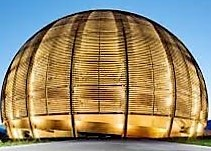Speaker
Description
The concepts of the nuclear level density (NLD) and $\gamma-$ray strength function (GSF) are two essential tools for the statistical description of excited nuclei and their $\gamma-$decay, used in numerous large-scale astrophysical calculations of abundances of elements in the universe. In this work, one of the widely used experimental techniques, the Oslo method was applied to the $^{120,124}$Sn isotopes to extract these statistical quantities for astrophysical purposes.
Firstly, the experimental GSFs were used to address the question on the validity of the generalised Brink-Axel hypothesis (gBA), adopted as a crucial assumption in astrophysical calculations of neutron capture cross-sections within the statistical model. In its most general form, the hypothesis states that the GSF can be treated as a function of $\gamma$ energy only. In order to test this and ensure the reliability of the slopes and absolute values of the extracted strengths, the Oslo method results were cross-checked with the strengths obtained with the novel Shape method and in the relativistic Coulomb excitation experiment. Comparison of all strengths for both nuclei demonstrates a good agreement within the estimated error bars below the neutron separation energy. This agreement suggests that the gBA hypothesis can be considered valid for any astrophysical calculations for the studied cases in this energy region.
Secondly, the experimental GSFs and NLDs of $^{120,124}$Sn were further used as an input to the nuclear reaction code TALYS to calculate the Maxwellian-averaged cross section for the $^{119}$Sn(n, $\gamma$)$^{120}$Sn and $^{123}$Sn(n, $\gamma$)$^{124}$Sn reactions. These results will be presented for the first time; they are expected to provide better constrains of the neutron capture cross-sections for these nuclei than the theoretical GSF and NLD models included in the TALYS code. As both nuclei demonstrate quite significant resonance features below the neutron separation energy, such as the pygmy dipole resonance, this study also addresses the particular importance of this nuclear feature for rates of the astrophysical s and r processes in the vicinity of Sn isotopes in the nuclear chart.




